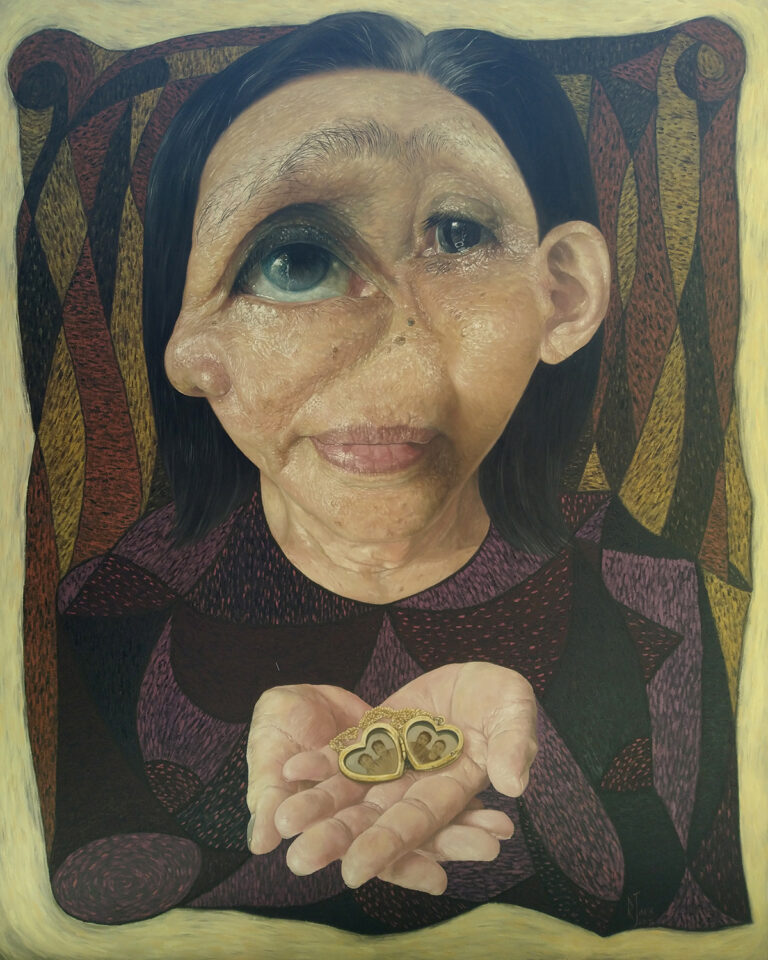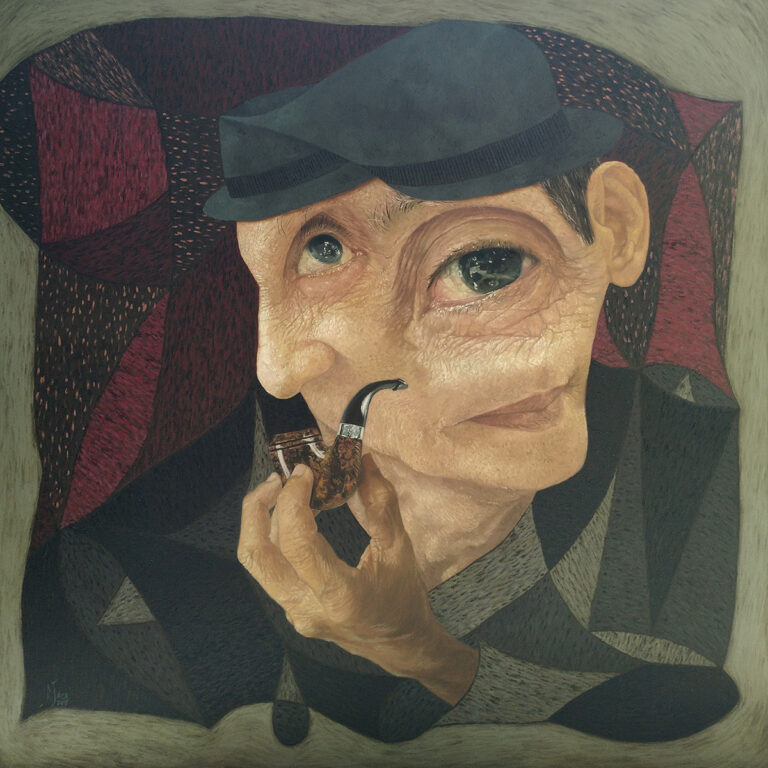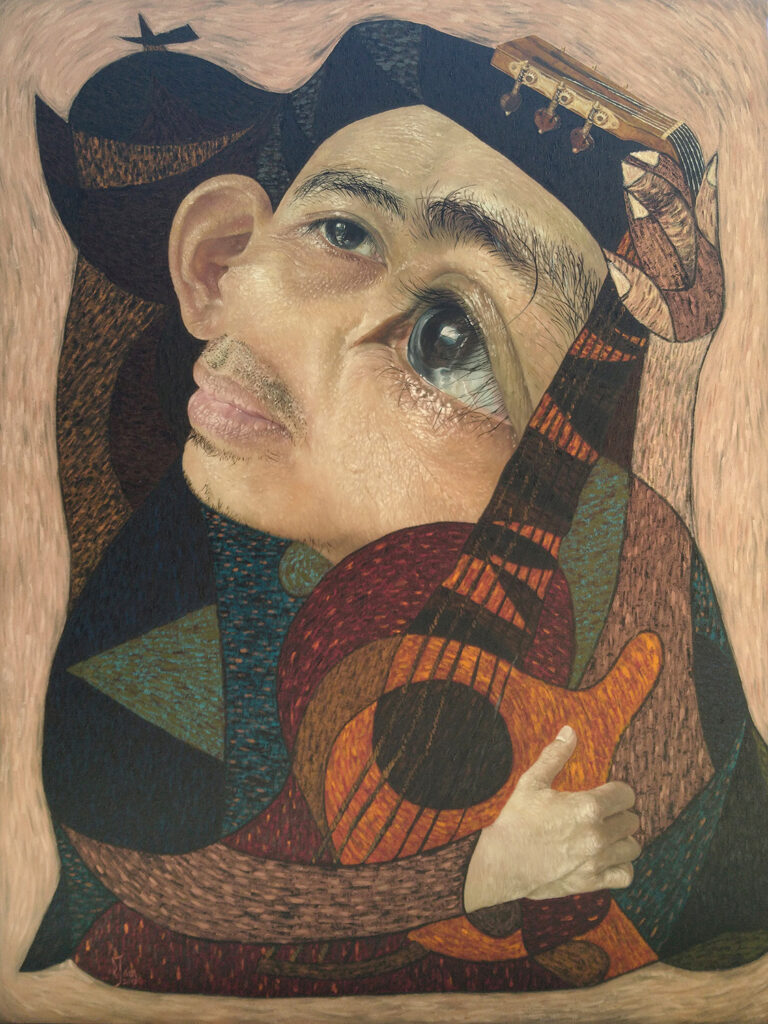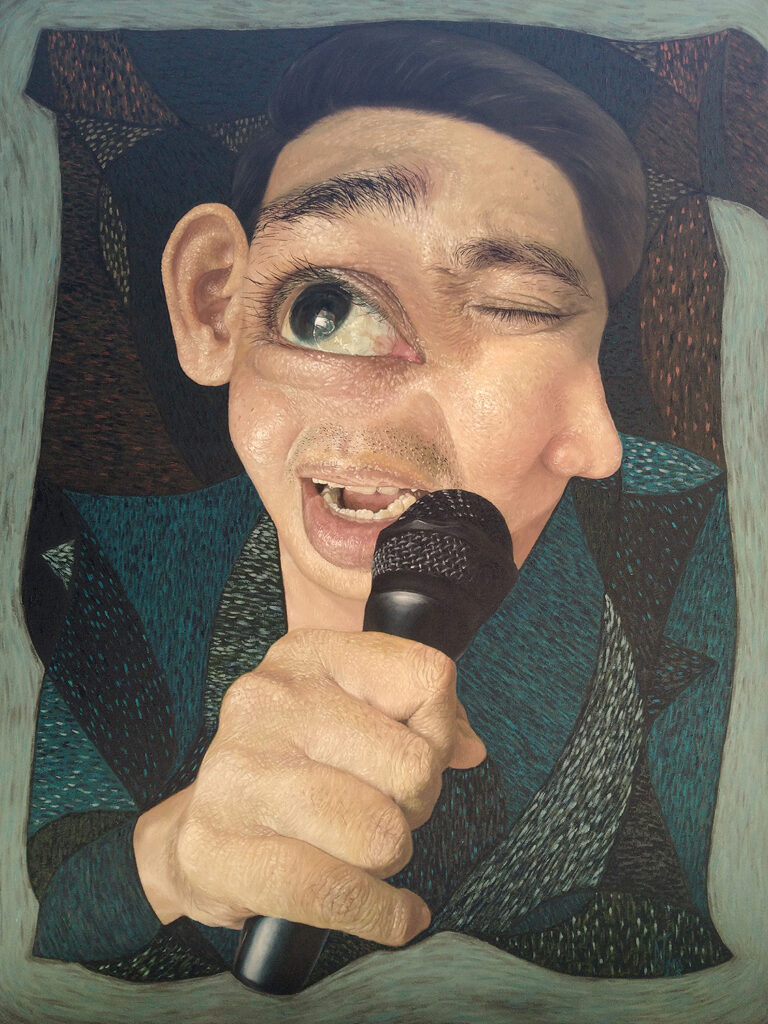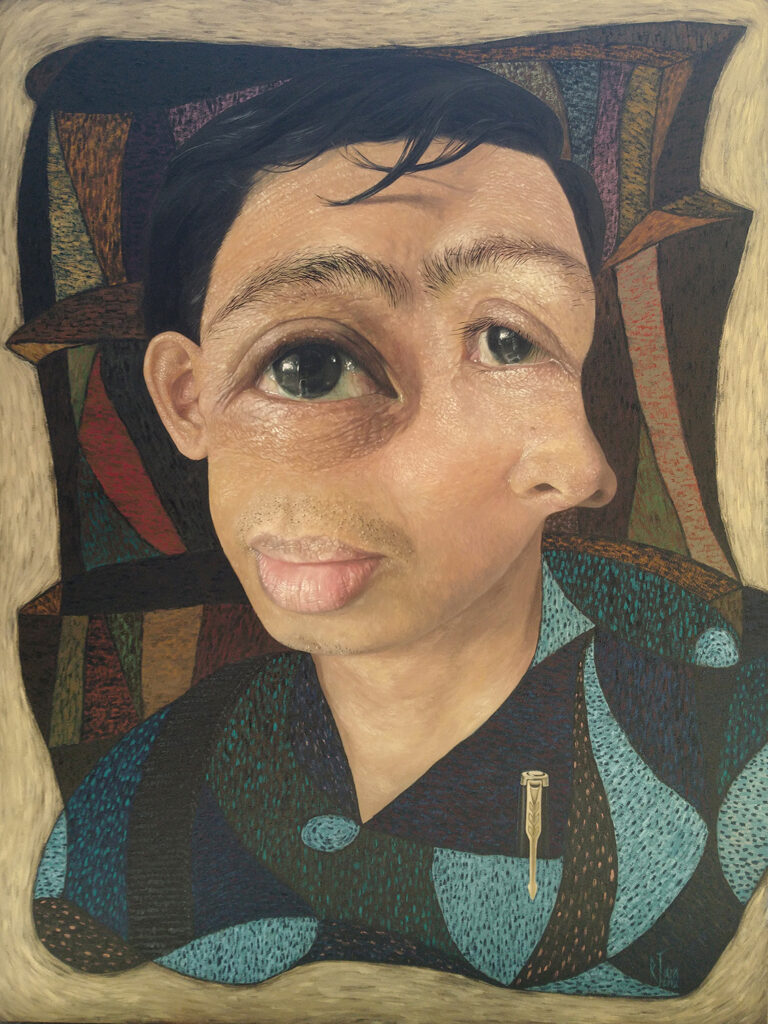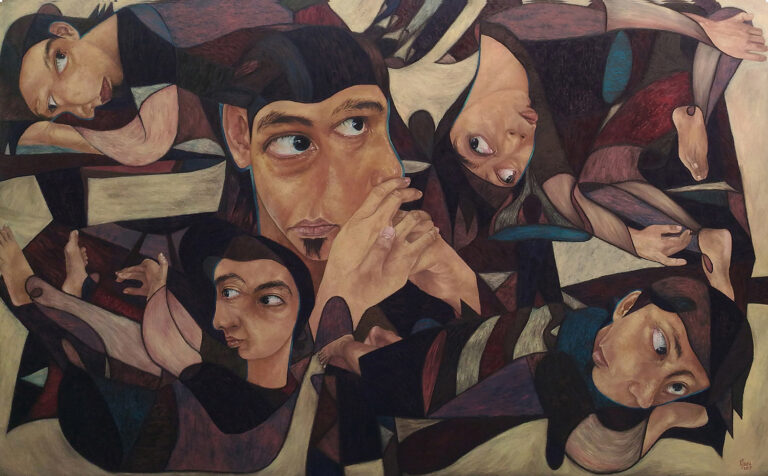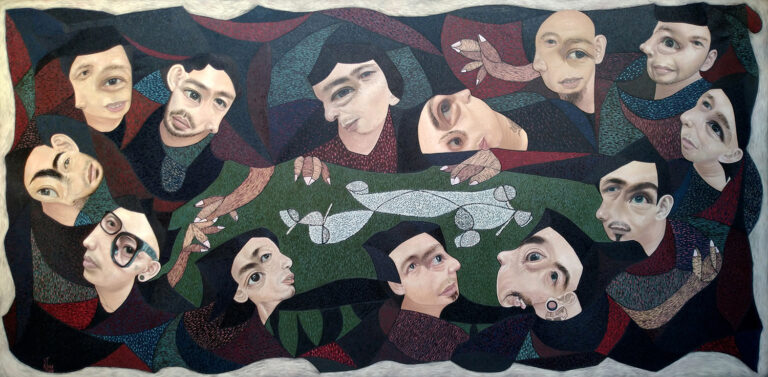Pamilya
Familial Bonds
Pamilya by Ryan Jara
Ryan Jara has always been passionate about making art, finding joy and quiet contemplation in applying paint on canvas and, in the process, crystalizing his vision. But for years, painting had to take a backseat as he needed to prioritize the urgent concerns of his family. Such a sacrifice is known to many Filipinos everywhere (think of the overseas Filipino workers who take care of other people’s children so they can send money back home), but its ubiquity doesn’t diminish the pain when it is oneself that confronts this reality. After all, one is delaying fulfillment that one has been pursuing for years. Not to mention the fact that the world may already be different place when one is ready to rejoin it.
In Pamilya, Jara’s solo exhibition, the artist chose to celebrate the family members (that also extend to friends) to whom he has offered to sacrifice part of his life. The show, itself, is a family portrait, featuring Jara’s parents, siblings, wife and child, and the tight knit of friends who saw him during this dark period of his life. As an acknowledgment of his own past predicament, the show highlights the self-portrait, “Downtime,” that chronicles the emotional and psychological toll that Jara went through for not being able to practice his craft.
Rather than painting them descriptively, Jara chose to employ a Cubist approach in order to capture the many sides—literally and figuratively—of his subjects. Certain facial features are enlarged (particularly the eye, which is the window of the soul), while others are minimized. Their respective backgrounds are a jumble of curvilinear shapes that also hew to Cubist ethos. The style is a way to elevate the people important in Jara’s life to one of the most recognizable idioms of visual art. They are not just family members depicted but seen through the prism of a long artistic tradition.
Aside from Jara’s unique figuration, each of the subjects possesses an attribute that defines an aspect of his or her personality. For instance, Jara’s mother holds a heart-shaped locket that contains the photos of his children who are her treasures; the father is remarkable with his newspaper boy hat and a pipe as he continues to dream big for the family; the brother, who loves singing in videoke, carries a mic; another brother, perceived as serious, has a pen kept in his shirt pocket; while another brother, a musician, strums a guitar. Their togetherness is what binds Jara’s own family and select group of friends who have kept him company through all these years.
Pamilya is a touching portrait of Jara’s affinities, which connect to the larger tradition in which the family comes first, even before oneself. There is no tone of bitterness to the compositions, only a sincere generosity towards those who are near and dear to him. As a homage, the exhibition makes us also think about the people who serve as the reason why we persist in life. Whatever has transpired in the past, the exhibit shows that Jara has successfully overcome it and is, in fact, drawn his inspiration from the very people who have made his burden light.
-Carlomar Arcangel Daoana


